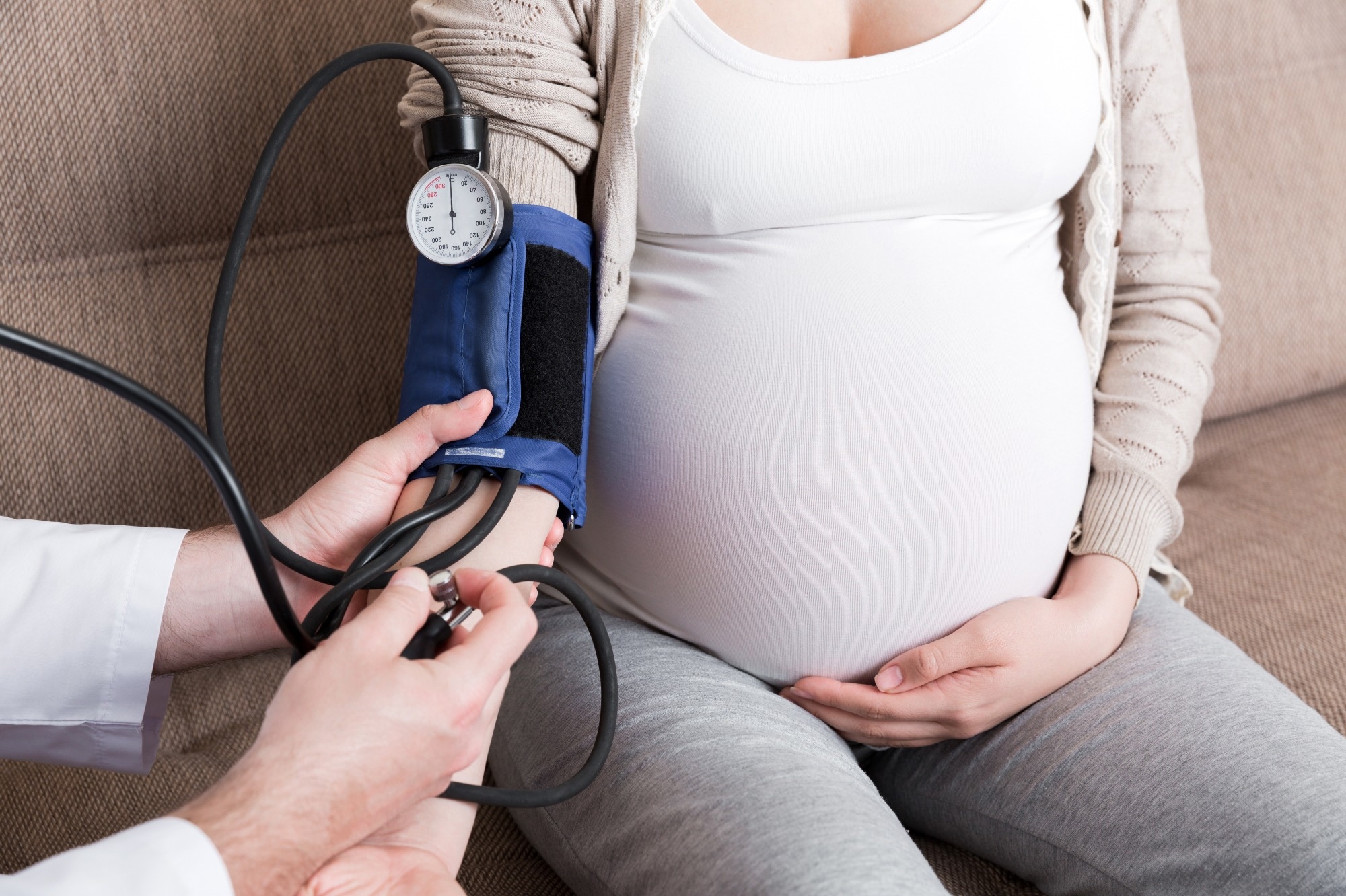A recent study in the journal Hypertension Research assessed whether self-monitoring could be used to manage high blood pressure (BP) and pre-eclampsia in high-risk pregnancies.
Study: Using self-monitoring to detect and manage raised blood pressure and pre-eclampsia during pregnancy: The BUMP research program and its impact. Image Credit: SNeG17 / Shutterstock.com
Background
About 10% of pregnant women are diagnosed with high BP, which increases the risk of developing pre-eclampsia. Furthermore, individuals who experience high BP persistently are at an increased risk of developing chronic hypertension and cardiovascular disease.
During pregnancy, it is important to detect hypertension at early stages and effectively manage the condition to avoid unfavorable outcomes for both infants and mothers. Unlike non-pregnant women, pregnant women experience rapid changes in BP levels that are challenging to predict.
Self-monitoring of blood pressure (SMBP) allows an individual to monitor their BP outside clinical settings and has been shown to be highly effective in individuals with hypertension. Recent studies have indicated that SMBP can play an important role in the early detection and management of hypertension in pregnant women, which could reduce the number of visits to clinics.
Although many studies have indicated the effectiveness of SMBP during pregnancy, the outcomes were based on small observational studies conducted in Europe, Asia, and North America. Therefore, a large-scale study is needed to validate these observations.
How common is SMBP in the United Kingdom?
In 2019, a large-scale U.K.-based survey revealed that about 20% of pregnant women currently self-monitor their BP, many of whom have self-identified as hypertensive. Interestingly, most pregnant women who monitored BP independently did not share their readings with their antenatal care team or use pregnancy-validated BP monitors. In fact, one previous systemic review revealed the presence of a mean home-clinic difference in BP readings of 1.2 mmHg systolic BP throughout pregnancy.
Based on these findings, it has been proposed that healthcare professionals (HCPs) proactively enquire about SMBP and provide valid information on monitoring BP levels appropriately.
The effectiveness and safety of SMBP
Several trials have been conducted to assess the effectiveness of SMBP in pregnant women. These trials revealed that SMBP has effectively reduced the number of routine antenatal clinic visits or usual care in low-risk pregnant women.
The Blood Pressure Monitoring in Pregnancy (BUMP) pilot study established the possibility of SMBP in higher-risk and hypertensive pregnancies. BUMP1 and BUMP2 trials assessed the possibility of diagnosis and management of hypertension based on SMBP in higher-risk pregnancies.
The BUMP trials were randomized controlled trials that assessed the effectiveness of SMBP based on more than 3,000 pregnant women. All study participants were at a higher risk of pre-eclampsia and hypertension.
BUMP trial results indicated that using SMBP in higher-risk pregnancies is safe. However, no significant improvement from a clinical diagnosis of hypertension was observed in this population.
Importantly, about 61% of the women reported raised SMBP around one month before being detected in clinical settings. This observation supports the potential of SMBP for early detection of hypertension during pregnancy.
Unlike the non-pregnant population, the BUMP2 trial indicated that SMBP was not effective in controlling BP. During the BUMP2 trial, the average BP of many participants exceeded that of the Normoglycemia in Intensive Care Evaluation (NICE) target of 135/85 mmHg, thus demonstrating the need for antihypertensive medications in this population to maintain BP within the normal range.
Future of SMBP
Interviews and ethnographic observations revealed that good communication between women and clinicians regarding the use of SMBP could help in shared decision-making. However, future research must focus on alleviating any uncertainties about home-clinic differences, as it could affect clinical recommendations.
BUMP trials have shown that some clinicians do not have confidence in SMBP, particularly when it comes to making medical decisions. Clinical accuracy of self-monitored BP readings would help manage hypertension during pregnancy, ensuring healthy outcomes.
The coronavirus disease 2019 (COVID-19) pandemic has highlighted the existence of inequalities in maternity outcomes. Without having high-quality and diverse evidence, the implementation of a new antenatal care strategy could exacerbate problems of clinical risks and marginalization for women at-risk groups. Although there has been a slow increase in self-monitoring and remote care in antenatal care, it is essential to understand the inclusiveness of this shift.
Journal reference:
- Tucker, K. L., Hinton, L., Green, M., et al. (2023) Using self-monitoring to detect and manage raised blood pressure and pre-eclampsia during pregnancy: The BUMP research programme and its impact. Hypertension Research;1-7. doi:10.1038/s41440-023-01474-w
